Stephanie M.
I'm a content writer and novelist who loves books, writing, theater, and my cat. I have published two novels and traveled to London and Paris.
Columnist III
- Plebian Penman
- Common Writer
- Aristocratic Author
- Noble Scribe
- Lurker
- Pssst
- Hand Raiser
- Vocal
- Outspoken
- Extrovert
- Center of Attention
- Forms a Crowd
- Sharp-Eyed Citizen
- Town Watch
- Detective Deskman
- Penman Patrol
- Forensic Fiend
- Motivational Columnist
- Motherboard
- Composition
- Literary Art
- Referencer
- Actor
- Successful Pilot
- Animator
- Animaniac
- Well Read
- Chaptered Mind
- Art Collector
- Article of the Month
- ?
- Articles
37 - Featured
33 - Comments
665
- Ext. Comments
316 - Processed
183 - Revisions
180
- Topics
76 - Topics Taken
5 - Notes
243
- Topics Proc.
74 - Topics Rev.
16
- Points
12193 - Rank
4 - Score
8421
Latest Articles
Latest Topics
The Impact of Blue and BlueyA popular meme showing Blue of Blue’s Clues fame and Bluey of the eponymous Australian cartoon reads, "Every so often, a blue dog appears to guide a new generation." Tongue-in-cheek humor aside, one cannot deny the popularity and relevance of Blue and Bluey for millennials and Gen Z in particular. Examine and analyze these two blue canines, their compatriots, and their shows. Compare and contrast them. What makes them both so engaging, yet unique to the generations at which they were originally aimed? What makes both so special for both the children and parents who watch them now? Why have both shows succeeded in netting older "periphery demographics" (e.g., older elementary students) where other shows have not? Or conversely, if one show or the other drove, or is driving, other older viewers up the proverbial wall, why is that? |
The Rise of the Split Time NovelCurrently, split time novels are some of the most popular in the fiction market. These novels usually pair a historical protagonist with a contemporary one, connecting their stories across time through similar themes and motifs or sometimes a significant object or event. For instance, one protagonist might have lived through World War I or II, and the other might be that protagonist’s grandchild or great-grandchild looking for answers regarding what happened to that grandparent during the war years, but the other family members never talk about. Despite the popularity of these stories, they’re arguably becoming formulaic. Some time periods and plotlines are becoming overdone. For instance, it is no longer uncommon for World War II to be the featured historical period. A contemporary protagonist is often drawn to care about the past only if he or she "gets something out of it," such as a promotion at work or a "last chance" to connect with a grandparent dealing with dementia (the question becomes, why didn’t the grandchild ever attempt to connect before)? Discuss some of the more popular split time novels and what sets them apart from their myriad counterparts. Discuss what historical time periods aren’t being taken advantage of right now that could be, or what plotlines contemporary characters could experience. For instance, could time travel be a possibility? Body or identity switches? Historical and future timelines?
|
The Arts' Love of All Things WinterDisney’s Frozen burst into our theaters and onto our small screens in 2013, and no one has "let it go" since. The film became a franchise, with rumors of a third installment coming in 2023 or later. But Frozen is not the only wintry tale media consumers love. "Winter tales" can be found across mediums, from TV series like Game of Thrones whose tagline is "Winter is Coming," to a plethora of books with titles like The Snow Child, WinterFrost, and Girls Made of Snow and Glass. Many of today’s super-powered or "chosen one" protagonists also have winter-related powers; Queen Elsa might be the most obvious, but there is also Jack Frost from Rise of the Guardians, as well as Freya from Snow White and the Huntsman. Winter permeates the arts, no matter the season. Yet what is it about this season, out of four, that captures the imagination of writers, filmmakers, and other artists? Analyze a few prevalent winter tales across mediums, looking for commonalities among characters, character arcs, plot threads, powers, and more. Could the other three seasons garner this kind of attention, and if yes, what would it take to make that happen? Are artists, authors, and others who craft "winter tales" trying to make a statement about their art, themselves, or humanity through winter? If yes, what is it? Discuss.
|
The Blending of Christianity and HorrorThe most recent horror film on Hollywood’s docket is Prey for the Devil, which concerns Sister Ann. This devout nun wants to be an exorcist and would be great at it, but her training school accepts only men. Yet Sister Ann may be the only one who can help the patients in the school’s attached hospital for the possessed, including a ten-year-old girl. The blending of Christianity and horror in this film is by turns respectful to the Church and seems to encourage audiences to explore, if not root for, the demonic. It’s a conundrum found in many similar films, such as The Exorcist and The Nun. The question is why this blend comes up so often, and especially why the Catholic Church is presented on the front lines in this murky battle between good and evil (they aren’t always on the "good" side). Are these portrayals as balanced as they could and arguably should be? How can or should horror films stay true to their genre, while portraying Christians or perhaps people of other faiths, as those who would protect or save innocents from the demonic? What do these films say about spiritual battle lines in real life? Discuss.
|
Analyzing the Nostalgic '90s Sports FilmThe ’90s is fairly famous for several family-oriented, nostalgic sports films. From Angels in the Outfield to the Mighty Ducks trilogy, from the Air Bud franchise to Like Mike, Miracle, and Space Jam, during the decade, these films seemed to be everywhere. At the time, they were lauded as feel-good films the whole family could enjoy, particularly dads and uncles who might be moved to tears by memories of their former glories on the field or court. In the ensuing decades, these films are still respected, but also maligned as corny or overly inspirational depending on who you ask. Analyze the impact of the nostalgic sports film. Why did ’90s audiences seem to need so many of them, and why did they all seem to have such an inspirational format? Did they cater to a specific audience with a specific set of beliefs or aspirations? Were they meant to? Are they seen as overly nostalgic now simply because audiences have changed, or do we get our "heart" and "inspiration" in different ways? If the latter, where do we get it? Can the family-oriented, nostalgic sports film make a comeback? If so, what should it look like? |
The Impact of Thug NotesOn June 3, 2013, comedian and actor Greg Edwards began a series of web videos called Thug Notes. Using the persona Sparky Sweets, Ph.D., Edwards summarized and analyzed classic novels using a mix of modern language and "street slang" (e.g., a character who is murdered is "iced" or "murked," a hard-working character is said to be "hustlin’.") Thug Notes’ mix of humor, slang, and absolute respect for classic literature helped the series carve a unique niche in the world of web and educational videos. Each video has garnered a plethora of views, and the series’ popularity has encouraged viewers to read or reread books that might not have felt accessible before (many "newer" videos contain a promotion that begins, "Hey, get the book!" followed by a web address at which to do so). Discuss the impact of Thug Notes, using any of these or other elements. You might choose to discuss favorite episodes, or compare and contrast certain episodes. Also, discuss whether Thug Notes, which has not posted new content in a while, would be an acceptable platform for discussions of more contemporary literature, particularly that which is currently under censorship. Discuss whether a series similar to Thug Notes would work for other subjects. For instance, could there be a Thug Notes-style series for math? History? Theatrical productions?
|
September 11 in the ArtsSeptember 11, 2001 changed the world as we know it. Mere weeks after the terrorist attack that destroyed the Twin Towers, artists from all mediums responded to the tragedy with forms of self-expression that gave themselves and their consumers safe, multifaceted outlets to express their complex emotions. September 11 is now the subject of everything from hard-hitting documentaries and touching memoirs to gentle, yet serious episodes of kids’ shows and perhaps controversial country-western songs. Analyze and discuss some of your favorite, or least favorite, tributes to September 11 within the arts. What makes these tributes powerful, or conversely, disturbing or controversial? Which pieces do the best job of honoring the 9/11 survivors and victims? Do we need more 9/11 pieces, and if so, what should their focus and goals be? Can new pieces be tied into more current tragedies, historical ones, or a mix of the two?
|
YouTube Kids: Harmless or Dangerous?In past decades, children got their television "diet" from specific shows on specific channels, or program blocks on one or two channels tailored for them. Today, our children have an endless list of shows to choose from thanks to streaming services and 24-7 content. One example of such content is YouTube Kids, a network of channels that are given new content daily, sometimes several times daily. Some of this content is positive, but just as much if not more is allegedly detrimental to kids. Writer and artist James Bridle, for instance, gave a TED Talk for YouTube that, while three years old, has 4.8M views. His TED Talk posits that YouTube kids is actually dangerous to kids’ mental health and development. Examine this TED Talk as well as other sources, such as the Momo controversy from the late 2010s, or certain shows and videos on YTK. What content is the most detrimental, and why? Is there anything parents, guardians, and tech experts could do to make content more educational and child-friendly? Perhaps most importantly, what exactly is the draw of YTK, and why do so many adults welcome its content, questionable or not? Discuss.
|
Latest Comments
| Classic Literature's "Infinity Girls" | |
@Joker: You know, it really is amazing what young kids can do with theater. My niece was in Finding Nemo, Jr. in the fall (she’s six), and the cast members with lead roles were middle-schoolers. I honestly thought some of them were older. The dedication and skill level were legit inspiring. | Classic Literature's "Infinity Girls" |
Oh, dear. How awful for her. 🙁 | Classic Literature's "Infinity Girls" |
@Dorito: Yes, you do! I just had another thought, too. Anne had never tasted currant wine, which, she’s a kid so okay. BUT, she had also never tasted raspberry cordial, which was (is)? a child-friendly drink. And I’m guessing parents back then had different views on what constituted “junk food,” but Anne of Green Gables reads as if cordials were commonplace. So if that’s true, Anne was just that much more deprived as an orphan and foster kid. As in, she probably rarely, if ever, had *anything* that would give her pleasure. She probably saw the smallest things as luxuries and treats. And now I’m sad, but in a good way. | Classic Literature's "Infinity Girls" |
@Yuliana: Thank you so much for sharing your story. It means a lot to know there are kindred spirits in this world, even online. | Classic Literature's "Infinity Girls" |
@Griffith: Well, as I said, once you see it, you can’t unsee it! 🙂 | Classic Literature's "Infinity Girls" |
@Choi: Now that you bring that up, yes. It brings to mind a lot of questions and discussion fodder about Edwardian beauty standards, how much of that was projected onto children, and so on. Also, as I hope you gleaned from the article, I found it frustrating, even as a kid, that everyone expected Mary to behave in one certain way. I don’t mean her imperiousness; as a kid, I did think she was a spoiled brat, and it took becoming an adult to see it differently. But like, giving her a hard time because she doesn’t “emote” the way other kids do? Even at her age I was like, “What’s up with that?” | Classic Literature's "Infinity Girls" |
@Kadence: Wow, that’s amazing! 🙂 | Classic Literature's "Infinity Girls" |

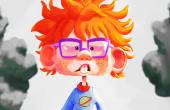
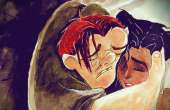
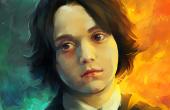

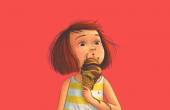
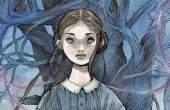
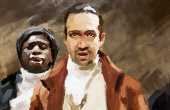
@pierce: Not the whole Emily trilogy, but most of it. And yes, I love Emily, too. I’m not even gonna say I like one or the other “better”; I see them as, not carbon copies, but very much “sisters.” If I can get permission to do another article like this (as a follow-up), I want to talk about Emily.